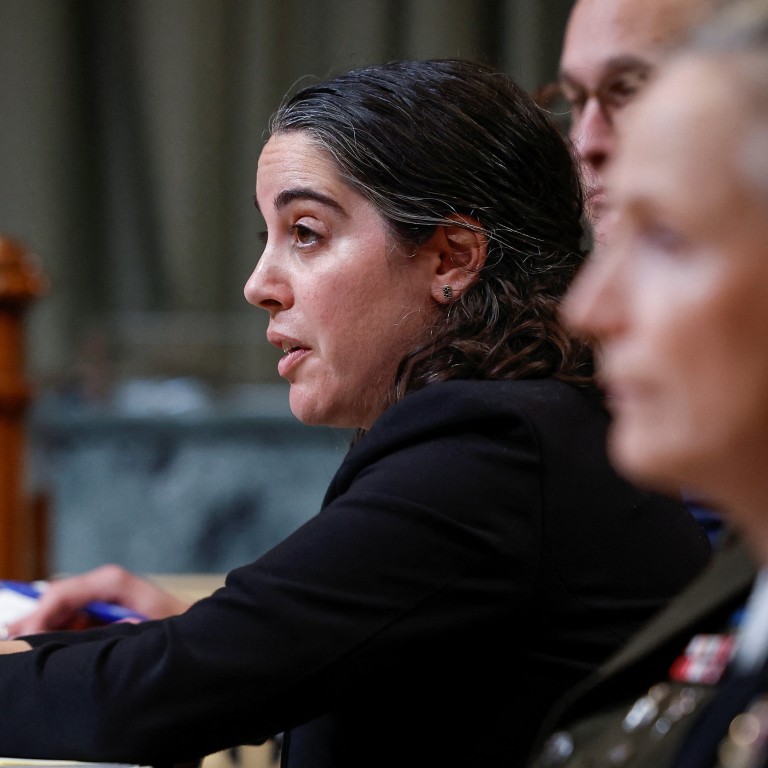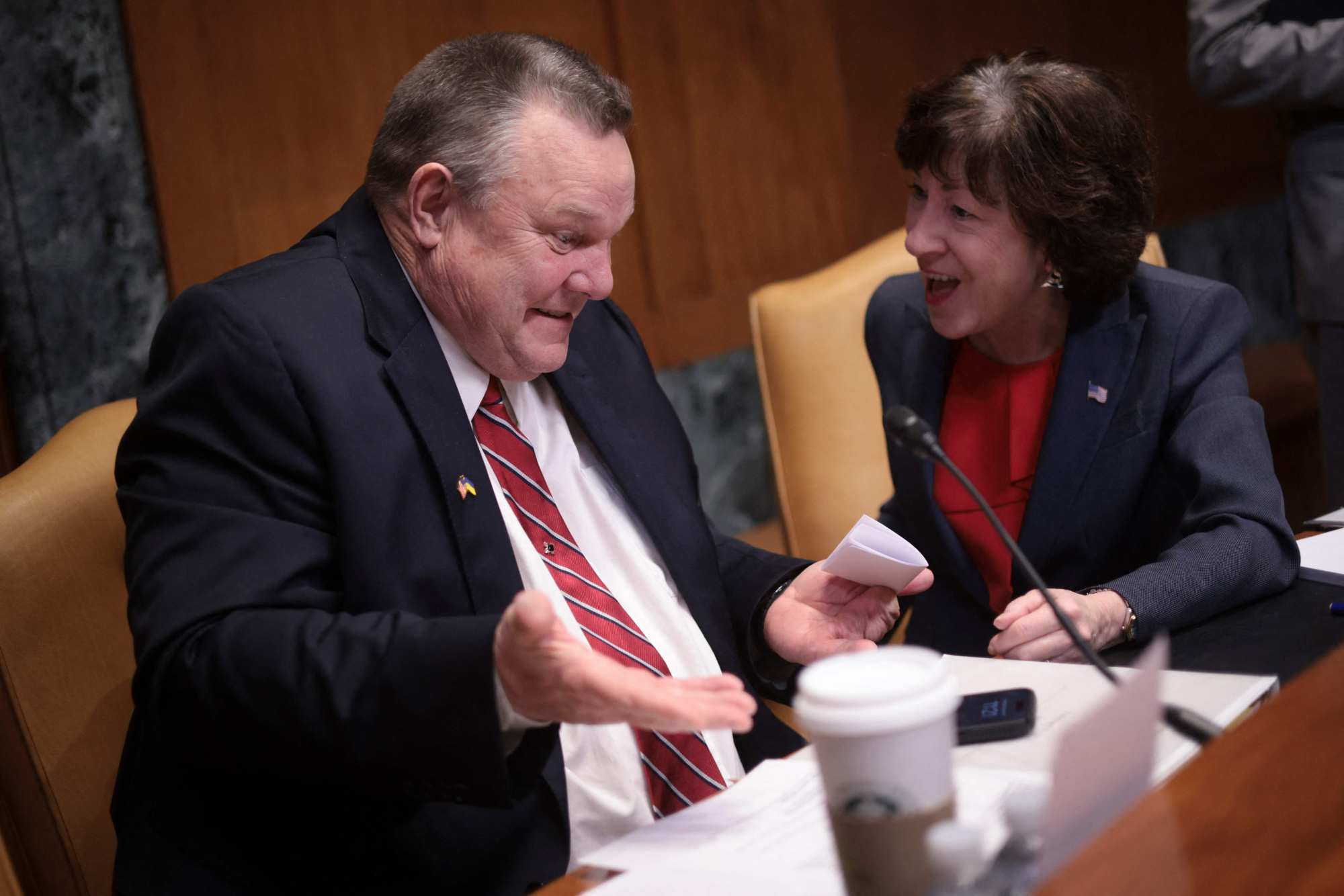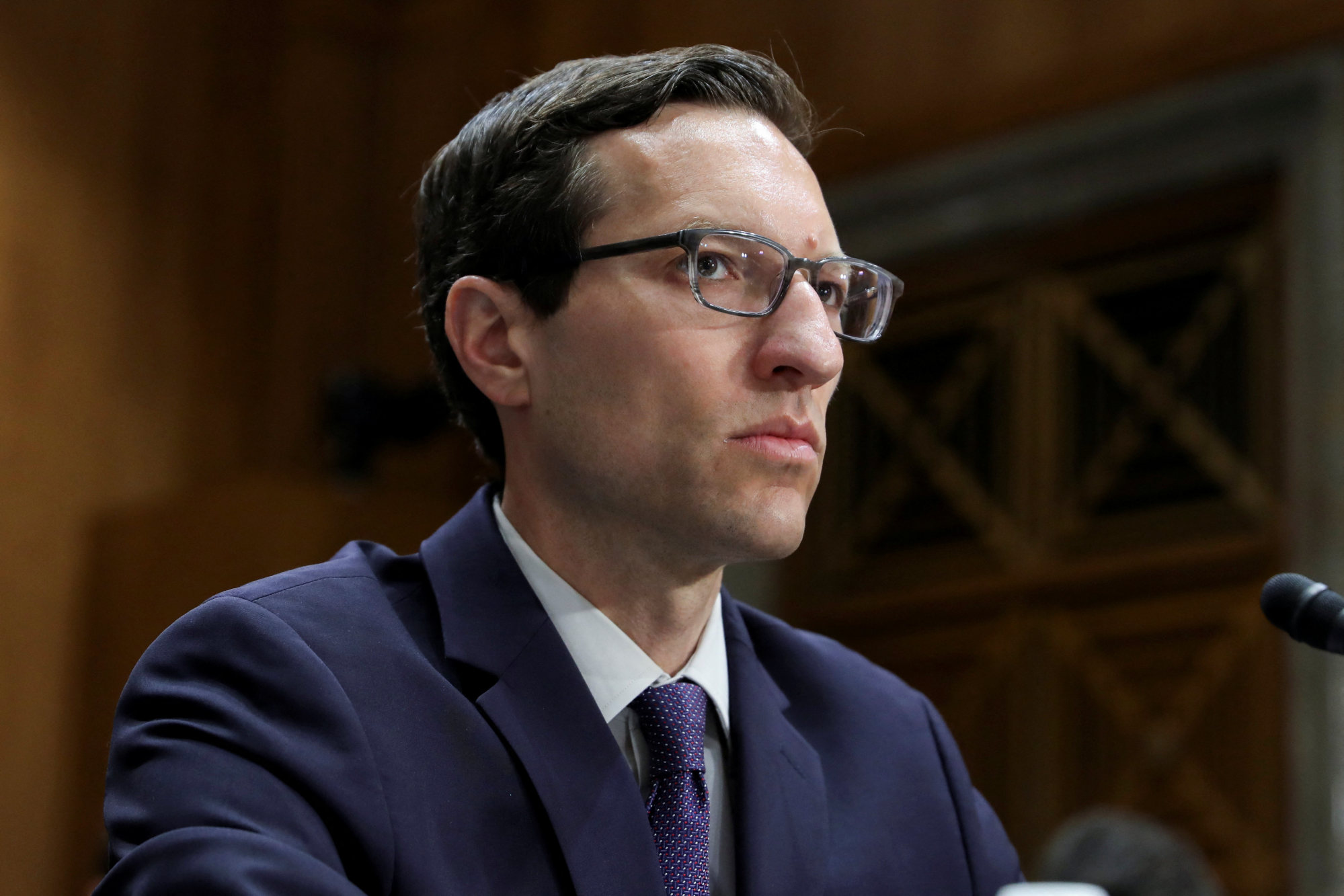
US only ‘recently’ concluded Chinese balloon belonged to global surveillance programme: Pentagon
- Biden administration officials testify that week-long wait gave military extra time to observe airship over US and understand China’s capabilities
- Revelations come as House unanimously denounces ‘brazen violation’ of American sovereignty and accuses Beijing of deception
“The information that we have since gleaned about the balloons that have transmitted globally was only recently discovered,” said Melissa Dalton, Assistant Secretary of Defence for homeland defence and hemispheric affairs, in testimony before a subcommittee of the Senate Appropriations Committee.
The resolution blamed China for trying to “deceive the international community through false claims about its intelligence collection campaigns”.
And amid claims by Republicans including Senator James Risch of Idaho that the Biden administration failed to keep Congress properly informed about the balloon, the Republican-led resolution also called on the administration to “keep Congress apprised by providing comprehensive briefings” on the incident.
At the Senate Appropriations hearing on Thursday, Jedidiah Royal, a senior Pentagon official overseeing Indo-Pacific security affairs, echoed Dalton’s revelation. He said the US military was “more aware of this balloon programme in recent months than we have been in the past”.
American officials first detected the balloon and its payload over Alaska on January 28, but did not shoot it down until it nearly flew beyond American skies over the Atlantic Ocean last Saturday following a week-long voyage across the continent.
Dalton said the wait gave the military additional time to observe the balloon as well as gain an understanding of China’s capabilities and tradecraft.
China welcomes Janet Yellen visit but ‘strongly opposes US coercion’
Shooting down the balloon over water helped to minimise the risk of hurting civilians on the ground, she added, and improved the prospects of recovering debris, a process that is ongoing.
If the US had tried to take down the balloon over Alaska, Dalton continued, the deep and cold winter waters off the state would have made recovery-and-salvage operations “very dangerous”.
Asked whether the Pentagon already knew what China was trying to collect by using the balloon, Royal would only say that the military had “some very good guesses”.
“We think we know what they were going to collect,” said Democratic senator Jon Tester of Montana, chairman of the subcommittee, at the hearing. “We don’t know. That scares the hell out of me.”

Meanwhile, the House resolution called for an account of similar past incidents of China’s global use of surveillance balloons; a summary of all known infiltrations of US airspace by China in the past several years; a timeline from initial detection to shootdown of the suspected spy balloon last week; an assessment of the surveillance data that China was able to collect or transmit while flying over US territory; and a description and timeline of the US military’s recommendations to Biden for responding to the balloon last week.
Asked about Thursday’s hearings, a representative of China’s embassy in Washington pointed to comments made by Chinese foreign ministry spokeswoman Mao Ning earlier on Thursday that Beijing had explained multiple times that the balloon was for civilian use and accidentally entered US airspace when it was blown off course.
The grilling by lawmakers about the Pentagon’s awareness of China’s balloons – last week’s episode specifically and their use globally – illustrated the fresh urgency in Washington to firm up a comprehensive strategy to counter threats from Beijing.
State of the Union: China competition looms large over Biden’s addresses
The balloon incident figured into a separate hearing on Thursday by the Senate Foreign Relations Committee, which had been expected to convene even before news of the unmanned airship entering US airspace became public.
Ratner, who appeared at the hearing alongside Deputy Secretary of State Wendy Sherman, said China’s decision reflected a pattern in which Beijing used the opening and closing of military-to-military exchanges to signal its attitude towards Washington.

Both hearings recessed early to allow Sherman and other Biden administration officials to brief lawmakers further in a closed-door session on intelligence gathered so far with respect to the downed balloon.
On that front, Reuters on Thursday reported that the US Federal Bureau of Investigation had recovered “very limited physical evidence” from the balloon and had yet to “get enough information to assess its capabilities”.
“The high-altitude balloon’s equipment was clearly for intelligence surveillance and inconsistent with the equipment on board weather balloons,” the State Department official said.
US lawmakers urged to boost trade blocs, alliances after Chinese balloon row
“It had multiple antennas to include an array likely capable of collecting and geolocating communications,” the official added. “It was equipped with solar panels large enough to produce the requisite power to operate multiple active intelligence collection sensors.”
Ratner said problems in the Pentagon’s communication with China’s military had predated publicity around the balloon incident.
“Over the last several months”, he explained, Beijing had viewed “the mil-to-mil relationship as something that they turn on and off, to express displeasure with other things that are happening in the relationship”.
“We think that’s really dangerous,” Ratner said. “We continue to have an outstretched hand including immediately following the downing of the balloon, and unfortunately, today the PLA is not answering that call.”



